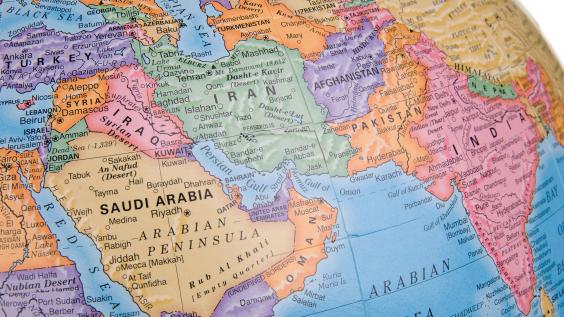Gulf Airlines and the Changing Map of Global Aviation

Table of Contents
Author(s)
To access the full paper, download the PDF on the left-hand sidebar.
Introduction
This report provides an empirical case study of one of the areas in which the Gulf States have been the most visible and dynamic generators of global change: the aviation sector.
- The startling rise of Emirates, Etihad, and Qatar Airways has reshaped global aviation markets around the three hubs of Dubai, Abu Dhabi, and Doha as the Gulf airlines have developed into what the Economist magazine has labelled “global super-connectors” capable of connecting any two points in the world with one stopover in the Gulf.
- This culminated in the January 2015 announcement that Dubai International Airport had overtaken London’s Heathrow Airport to become the world’s busiest airport for international passengers. Significantly, the 6 percent annual rise in Dubai’s international passengers (to almost 70 million in 2014) contrasted with the far smaller rate of increase caused by Heathrow operating at near-peak capacity owing to space and regulatory constraints.
- Moreover, Emirates, Etihad, and Qatar Airways have benefited further from the relative absence of political or legal constraints compared with European and North American “legacy carriers” in addition to “state capitalist” models of political and economic development.
A brief overview of aviation in the Gulf constitutes the opening section in this report and illustrates how, for much of the 20th century, Kuwait, Bahrain, and (briefly) Sharjah led the Gulf in aviation, with Qatar and the United Arab Emirates (UAE) marginalized and peripheral:
- The development of Gulf Aviation (now Gulf Air) illustrated how the airline emerged as a symbol of pan-Gulf aspiration in the 1970s, with ownership divided among Bahrain, Abu Dhabi, Oman, and Qatar.
- Bahrain also made aviation headlines in 1976 when it was the destination for the inaugural British Airways Concorde flight from London’s Heathrow Airport to Manama.
- Yet it was Gulf Air’s relative neglect of Dubai that prompted the ruling circle in that emirate to form their own airline, Emirates, with two leased aircraft in 1985 and begin the process of transforming first regional and then global aviation patterns.
The rapid expansion of Emirates in the 1990s and the growth of regional rivals Qatar Airways (which began operating in 1994) and Etihad (2003) forms the centerpiece of the second section, which compares and contrasts the three airlines’ development and operational models. The third and final section of this report examines how the Gulf airlines have contributed in practice to the deeper changes to the Gulf Cooperation Council (GCC) states’ role in the world economy:
- This is evident in the announcement of new destinations that simultaneously reflect and reinforce the broader shifts in patterns of international trade and investment.
- Moreover, the announcement of lucrative aircraft orders has provided Boeing and Airbus with vital revenue flows at a time of contraction and consolidation elsewhere in the aviation industry.
- This has given the Gulf airlines further leverage over manufacturers and created significant sources of friction among their commercial rivals.
Yet the report ends by questioning whether the Gulf can sustain three aggressively expanding airlines within such a concentrated region (and market) and examines the fate of low-cost carriers as well as Kuwait Airways and Gulf Air as they struggle to compete and survive. Hence, the impact of the Gulf on global aviation is a microcosm of the GCC states’ emergence as rising, yet potentially unsustainable, longer-term powers in the contemporary international system.
This material may be quoted or reproduced without prior permission, provided appropriate credit is given to the author and Rice University’s Baker Institute for Public Policy. The views expressed herein are those of the individual author(s), and do not necessarily represent the views of Rice University’s Baker Institute for Public Policy.



